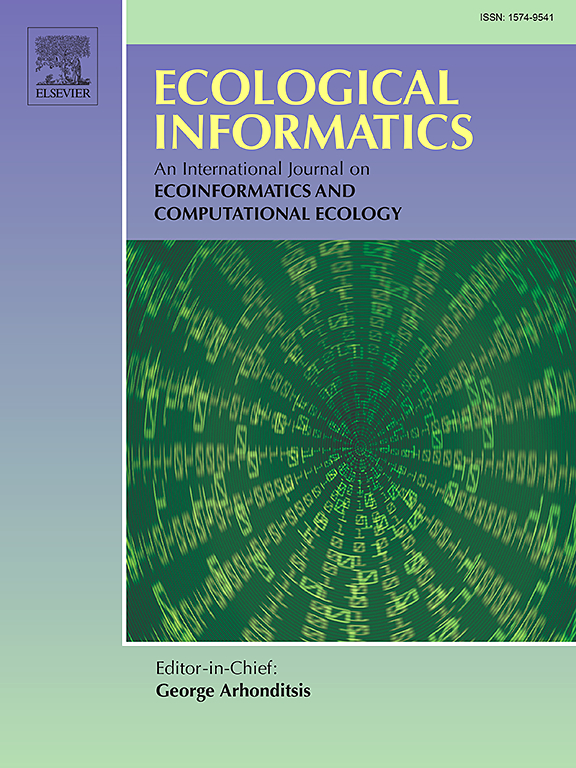Toward causal artificial intelligence approach for PM2.5 interpretation: A discovery of structural causal models
IF 5.8
2区 环境科学与生态学
Q1 ECOLOGY
引用次数: 0
Abstract
Understanding the causal mechanisms underlying PM2.5 generation is critical for developing effective prevention strategies, necessitating an approach that goes beyond prediction and seeks deeper causal explanations to support decision-making. This study addresses these concerns through a novel causal artificial intelligence framework employing structural causal models (SCMs) to interpret PM2.5 dynamics. The research uncovers hidden cause-and-effect relationships between meteorological factors and PM2.5 exposure by leveraging a data-driven causal structure discovery approach, effectively representing complex data-generating processes. The proposed SCMs undergo systematic validation across two critical dimensions: demonstrating human-like intelligence understanding and achieving significant alignment with real-world observations. The PC-based SCM is particularly outstanding when compared to other algorithms like GES- and Chow-Lui-based SCMs, delivering a remarkable performance in discovering cause-and-effect relationships with an F-measure of approximately 80 % compared to the gold-standard SCM. Statistical validation provided robust evidence of the model's reliability, with fit indices—including NFI, TLI, CFI, GFI, and AGFI—reaching approximately 0.98 and RMSEA approximating 0.05. These findings demonstrate that SCM can encode human-like reasoning and naturally align with real-world meteorological systems. This method is especially effective for urban air quality monitoring, where accessible meteorological data and transparent causal relationships are essential. Its capacity to inform evidence-based policy decisions makes it a powerful tool for creating intelligent decision-support systems in PM2.5 analysis and environmental mitigation strategies.
面向PM2.5因果人工智能解释方法:结构性因果模型的发现
了解PM2.5产生的因果机制对于制定有效的预防策略至关重要,这需要一种超越预测的方法,并寻求更深层次的因果解释来支持决策。本研究通过一个新的因果人工智能框架,利用结构因果模型(scm)来解释PM2.5的动态,解决了这些问题。该研究利用数据驱动的因果结构发现方法,揭示了气象因素与PM2.5暴露之间隐藏的因果关系,有效地代表了复杂的数据生成过程。提出的scm在两个关键维度上进行系统验证:展示类似人类的智能理解,并实现与现实世界观察的显著一致。与其他算法(如基于GES和基于chow - lui的SCM)相比,基于pc的SCM尤为突出,在发现因果关系方面表现出色,与黄金标准SCM相比,F-measure的值约为80%。统计验证为模型的可靠性提供了强有力的证据,拟合指数(包括NFI, TLI, CFI, GFI和agfi)达到约0.98,RMSEA接近0.05。这些发现表明,SCM可以编码类似人类的推理,并自然地与现实世界的气象系统保持一致。这种方法对城市空气质量监测特别有效,因为可获得的气象数据和透明的因果关系至关重要。它为基于证据的政策决策提供信息的能力,使其成为在PM2.5分析和环境减缓战略中创建智能决策支持系统的有力工具。
本文章由计算机程序翻译,如有差异,请以英文原文为准。
求助全文
约1分钟内获得全文
求助全文
来源期刊

Ecological Informatics
环境科学-生态学
CiteScore
8.30
自引率
11.80%
发文量
346
审稿时长
46 days
期刊介绍:
The journal Ecological Informatics is devoted to the publication of high quality, peer-reviewed articles on all aspects of computational ecology, data science and biogeography. The scope of the journal takes into account the data-intensive nature of ecology, the growing capacity of information technology to access, harness and leverage complex data as well as the critical need for informing sustainable management in view of global environmental and climate change.
The nature of the journal is interdisciplinary at the crossover between ecology and informatics. It focuses on novel concepts and techniques for image- and genome-based monitoring and interpretation, sensor- and multimedia-based data acquisition, internet-based data archiving and sharing, data assimilation, modelling and prediction of ecological data.
 求助内容:
求助内容: 应助结果提醒方式:
应助结果提醒方式:


